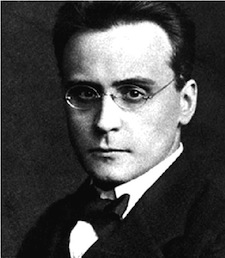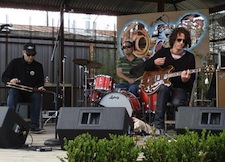Tonight’s rips are the complete Webern with Pierre Boulez directing on Sony, and a couple of albums by ‘The Friends Of Dean Martinez’. I also grabbed the Naxos discs of the Haydn String Quartets to start ripping those. They will probably take some time.
The Friends of Dean Martinez are a quirky little group. Their first albums showed up on Sub Pop in the 90s (if I remember correctly) in the middle of the Seattle grunge craze. But (again, if I remember correctly) this was a band from Tuscon that sounded like it stepped out of Esquivel’s world, and on the way to our CD players, picked up some surf guitars. The music is almost exclusively instrumental, and has that 1960s bachelor pad feel. Very melodic and usually mellow, mostly originals, but a few covers thrown in for nostalgic purposes. They have a great version of ‘The Shadow of Your Smile’ on their first album that fits into this nostalgia category, complete with LP surface noise, appearing as sound from the distant past. Violins playing along with the melody slowly in the beginning (with an eBow?) until the drummer counts the group in. Here, a nice latin beat complete with claves and shakers takes over, and a wonderfully rich guitar sound. One of the things that I appreciate the most about popular instrumental music is how much the sound of the music seems to be paid attention to. When vocals are in the mix the subtleties of the instrumental playing and sound too often take a back seat. The Friends of Dean Martinez had a meticulous to attention to sound and at a time when a lot of music was about volume and noise, and while the lack of vocals usually spells doom on the pop charts, I’m thankful to Sub Pop for taking risks like these when the temptation would have been, for many labels, to just find more and more Nirvana’s to record and release as quickly as possible.
The Webern Sony set was the first complete set of Webern’s works, and it is quite fitting that PIerre Boulez is directing it. Boulez was one of the strongest proponents of Webern’s work after WW II (Webern was killed by a U.S. soldier shortly after the war in what seems to have been a misunderstanding of curfew rules). While I rarely listen to Webern for enjoyment, his work was a great resource for me as a younger composer, and I use his work when I talk about timbre and texture to composition and computer music students. His attention to sound and color is perhaps unmatched in early 20th century music, and unlike his second Viennese school contemporaries, the brevity of his works shows an understanding of atonal and twelve tone techniques that others missed.
Of course, Webern is often all the craze in music theory classes. People love to count the notes, find the rows and how Webern manipulated the contours. What is surprising to me is that all the other aspects of the music are often overlooked: his attention to bow placement to vary the color of notes, the careful choice of dynamics. What surprised me most about most analyses of Webern’s work is the careful attention to the notes. Pitches and rhythm are the most precise parts of western music notation, but it seems to me that because they can be notated so precisely they have become the overarching concern for most music theorists. They are the part of the music that they can most easily re-create in their head in the absence of performance. In the op. 9 string quartet pieces for instance, we can see notes as they are written, but when the bowing and possibly even the fingering are taken into account, the resulting sound may bear little resemblance to the indicated pitch. It may be a shimmer of glassy sound filled with bow noise rather then a focused pitch. Certainly, the pitch that is written is the one that has to be played to get that sound, but how does such a note figure into the coherence of an atonal pitch set or serial row? Chances are someone may find something interesting about the notated pitch, but in performance the result may remove any sense of pitch entirely.
And while what I am about to say is an oversimplification, I have found that the idea behind it has been one of the most important ideas about composition that I have gotten from Webern: It isn’t all about the pitches. Now I say this with the realization that pitch is one of the most important parts of musical information we hear, and it is one that needs careful attention. Musicians are trained in a very pitch-centric way. But as a composer that explores new territory, I feel like this aspect is something to play with rather then something to be a slave to. I have also discovered that ideas like tonality or any sort of pitch organization has more to do with musical context then it does with what scale or pattern of pitches someone is using. I can create a sense of confusion and wandering just as easily with a major scale or a serial row, and Berg certainly showed that you can use a serial row and still have a sense of tonality and romanticism. So in my own work, I have started to figure out where I need to really care about melodic material, and what I have to do if I want a listener’s focus to be elsewhere. Like I said – I think this is oversimplification. It would probably take a whole book to really explain it in words. Or – a piece or two of music.



